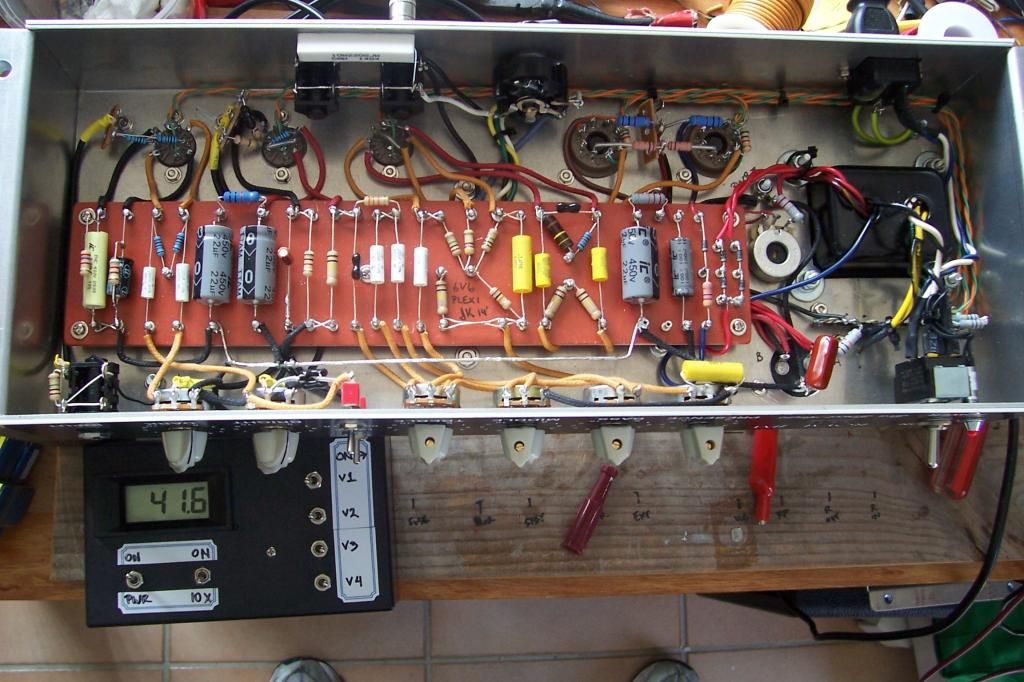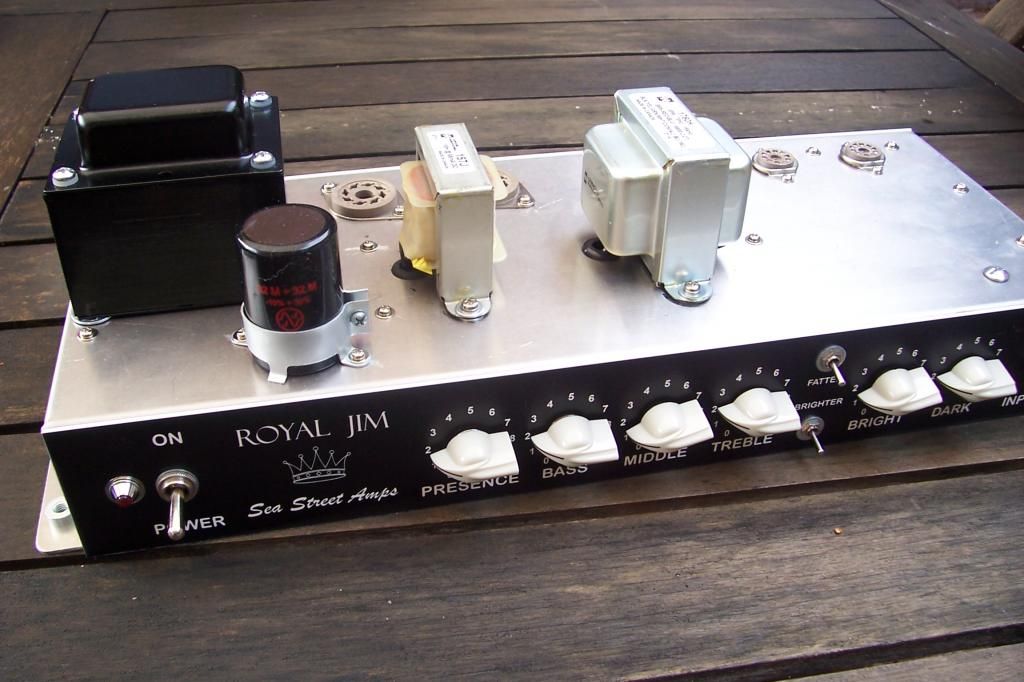I've recently built the MHuss 6V6 Marshall and it seems fine but I think the power tubes and transformers aren't pulling their weight. When I hook up the scope/signal-generator/DVM I get 8.5watts clean and 15watts flat-out into 8ohms. I would guesstimate it should be doing about 20watts plus when cranked.
As comparison I just measured my 18watt and it's doing 12 watts clean and 22 watts cranked
Any ideas to test? I've disconnected the negative feedback and also the 220 ohm safety resistor across the speaker jack to see if that was an issue but still the same.
Here's the schematic:
Here's my build:
At idle the JJ6V6S tubes are doing 20ma each with -40VDC bias, plates are 470 screens are 430VDC.
At clean max sine output: grid 25VAC plates 440VDC screens 358VDC 8ohm dummy load 8VAC.
At max volume : grid 35VAC plates 430VDC screens 318VDC 8ohm dummy load 11.1VAC.
I'm using Hammond iron PT 290BEX 660VCT 138ma; OT 1760H 20W; Choke 157J 10H 65ma.

As comparison I just measured my 18watt and it's doing 12 watts clean and 22 watts cranked
Any ideas to test? I've disconnected the negative feedback and also the 220 ohm safety resistor across the speaker jack to see if that was an issue but still the same.
Here's the schematic:
Here's my build:

At idle the JJ6V6S tubes are doing 20ma each with -40VDC bias, plates are 470 screens are 430VDC.
At clean max sine output: grid 25VAC plates 440VDC screens 358VDC 8ohm dummy load 8VAC.
At max volume : grid 35VAC plates 430VDC screens 318VDC 8ohm dummy load 11.1VAC.
I'm using Hammond iron PT 290BEX 660VCT 138ma; OT 1760H 20W; Choke 157J 10H 65ma.


Comment